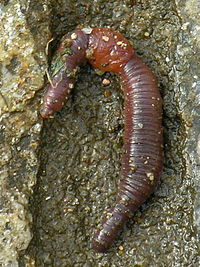
Photo from wikipedia
Background The non-invasive 3D-imaging and successive 3D-segmentation of plant root systems has gained interest within fundamental plant research and selectively breeding resilient crops. Currently the state of the art consists… Click to show full abstract
Background The non-invasive 3D-imaging and successive 3D-segmentation of plant root systems has gained interest within fundamental plant research and selectively breeding resilient crops. Currently the state of the art consists of computed tomography (CT) scans and reconstruction followed by an adequate 3D-segmentation process. Challenge Generating an exact 3D-segmentation of the roots becomes challenging due to inhomogeneous soil composition, as well as high scale variance in the root structures themselves. Approach (1) We address the challenge by combining deep convolutional neural networks (DCNNs) with a weakly supervised learning paradigm. Furthermore, (2) we apply a spatial pyramid pooling (SPP) layer to cope with the scale variance of roots. (3) We generate a fine-tuned training data set with a specialized sub-labeling technique. (4) Finally, to yield fast and high-quality segmentations, we propose a specialized iterative inference algorithm, which locally adapts the field of view (FoV) for the network. Experiments We compare our segmentation results against an analytical reference algorithm for root segmentation (RootForce) on a set of roots from Cassava plants and show qualitatively that an increased amount of root voxels and root branches can be segmented. Results Our findings show that with the proposed DCNN approach combined with the dynamic inference, much more, and especially fine, root structures can be detected than with a classical analytical reference method. Conclusion We show that the application of the proposed DCNN approach leads to better and more robust root segmentation, especially for very small and thin roots.
Journal Title: Frontiers in Plant Science
Year Published: 2023
Link to full text (if available)
Share on Social Media: Sign Up to like & get
recommendations!